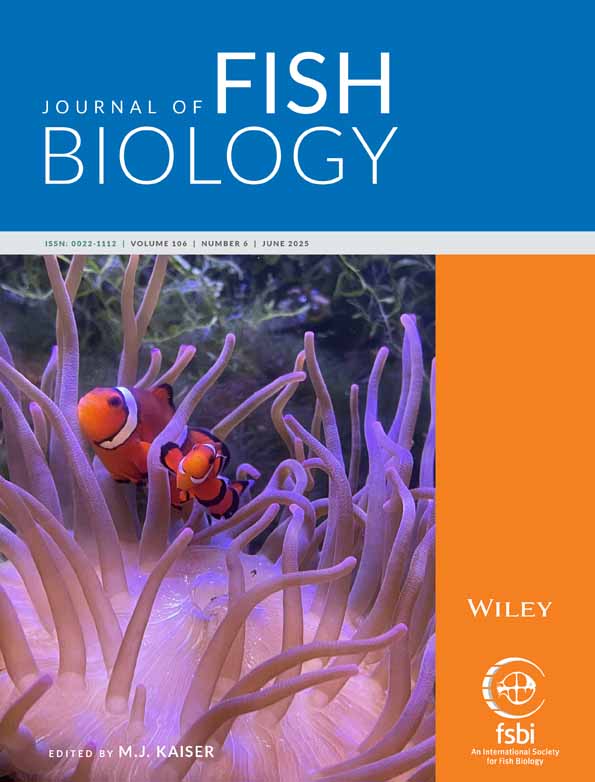Abundance, distribution, morphometrics, reproduction and diet of the Izak catshark
Abstract
Holohalaelurus regani was caught in 38% of the 3314 bottom trawls conducted during routine demersal surveys o. the South African west and south coasts from 1986 to 1999. An index of biomass for H. regani has increased on the west coast, from 1606 t in 1986–1993 to 3012 t in 1994–1999, despite c. 130 t being taken annually as by–catch in the demersal fishery. On the south coast, there has also been an increase over the same period, from 793 to 1350 t. Females and juveniles were generally found in shallower water (<300 m) than males, suggesting an inshore nursery area. Male H. regani become mature at 450–500 mm LT, whereas females become mature at 400–450 mm LT. There is reproductive activity throughout the year and fecundity appears to be high. This species is a generalist feeder, with the diet comprising teleosts, crustaceans and cephalopods. H. regani also scavenges offal opportunistically. Its high fecundity, the relative protection of females and juveniles in shallow water that is rarely trawled, its opportunistic diet and its robust nature that may allow it to survive after it has been discarded, have enabled H. regani to increase in numbers, despite indirect fishing pressure.




